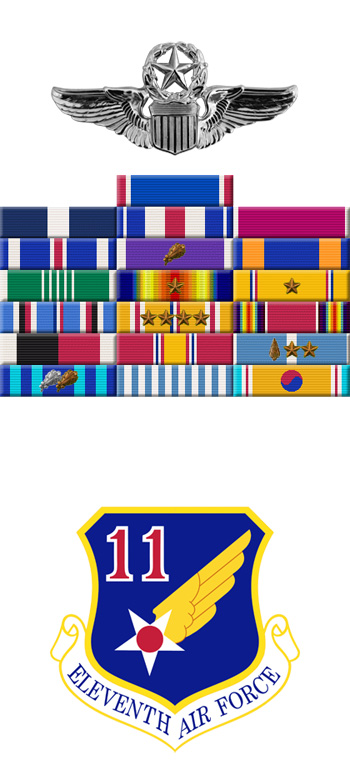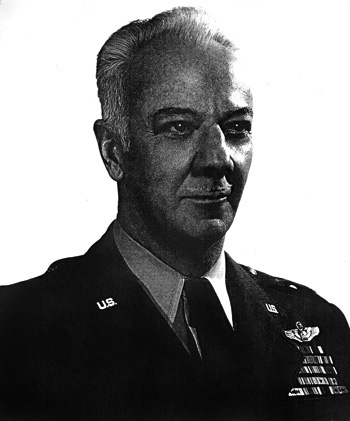
|
William O. Eareckson |
 |
|||
| Rank, Service | ||||
Colonel O-6, U.S. Air Force |
||||
| Veteran of: | ||||
|
||||
| Tribute: | ||||
Eric Eareckson was born on May 30, 1900, in Baltimore, Maryland. He enlisted in the U.S. Army on February 27, 1918, and served in the Field Artillery in France during World War I, and in the Infantry after that. After the war, he received an appointment to the U.S. Military Academy at West Point, receiving an honorable discharge and entering the academy on July 1, 1920. He graduated with a commission as a 2d Lt on June 12, 1924, and then attended pilot training, but soon washed out and became a balloon pilot instead. Lt Eareckson and Capt William E. Kepner won the National Balloon Elimination Race and were awarded the Paul W. Litchfield Trophy in 1928. He was then given a second chance at pilot training and was awarded his pilot wings in 1930, serving as a bomber pilot for the next several years. His first command assignment was as commander of the 36th Bomb Squadron in December 1939, followed by service as commander of the 28th Composite Group from September 1940 to June 1942, having deployed with the group to Alaska in March 1941. Col Eareckson then commanded XI Bomber Command during the Aleutian Campaign from June to November 1942, and served as a staff officer with Amphibious Force, Pacific, from November 1942 to April 1943. His next assignment was as Deputy Chief of Staff for the Coordination of Air and Naval Action for 11th Air Force during the invasion of Attu from April to June 1943, during which time he was wounded on the front lines by a Japanese sniper. He then served on the staff of Amphibious Force 9 from June to August 1943, followed by service as Assistant Plans and Operations Officer on the staff of the Commander in Chief, Pacific Fleet, from September 1943 to November 1944. Col Eareckson served on a special mission for Gen Arnold with 2nd Air Force at Colorado Springs, Colorado, from November 1944 to June 1945, and then as Air Base Commander for the 231st Base Unit at Alamogordo AAF, New Mexico, from June to November 1945. He attended the University of Michigan from November 1945 to May 1946, and served as Commander of the Army Section for Air in Rio de Janeiro, Brazil, from June to December 1946. His next assignment was on the staff of the Air Tactical School at Tyndall Field, Florida, from February to December 1947, followed by service with Headquarters U.S. Air Force in the Pentagon from February 1948 to March 1950. After serving as Air Base Commander at Goose Bay, Labrador, Col Eareckson deployed to Korea where he served as an Air Liaison Officer with X Corps from September to December 1950. After returning to the U.S., he served on the staff of Military Air Transport Service in Washington, D.C., from January to April 1951, followed by service as Commanding Officer of the 580th Air Resupply and Communications Wing at Mountain Home AFB, Idaho, from April to November 1951. Col Eareckson's final assignment was as President of the Air Force Physical Evaluation Board at Wright-Patterson AFB, Ohio, and then at Fort Myer, Virginia, from January 1952 until his retirement from the Air Force on August 1, 1954. Eric Eareckson died on October 26, 1966. Eareckson Air Station on Shemya Island in the Aleutian Islands of Alaska is named in his honor. |
||||
|
||||

